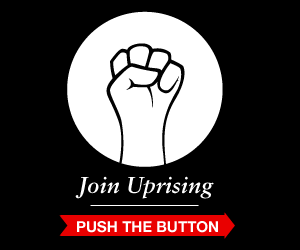Young at heart
Posted on 27th Apr 2012 by Mike Bayfield in Blog
Way back, when Dallas was still on TV and Margaret Thatcher was still on the throne, I was studying business at college in the UK. Eighties unemployment had dipped and it seemed I was almost guaranteed a job. Many of my classmates were offered two or three.
Part of what made us so marketable was studying marketing. We started with the classic text that universities around the world still use, ‘Principles of Marketing’ by Phillip Kotler and Gary Armstrong. I don’t remember much of what Phil and Gary said, but one thing I do is their definition of marketing: “satisfying needs and wants through an exchange process.”
As Mrs Thatcher would have told you, this is what basically underpins the whole idea of capitalism – the free market. Commodities are produced purely to meet consumer demand and you can get rich doing it: unlike in the old Soviet Union, where production was centrally planned. That was a highly inefficient system, which failed miserably to meet the needs of the vast majority of the people. Which is why it too failed.
However, our western capitalist economy isn’t exactly a model of efficiency either. Needs and wants aren’t automatically satisfied. Markets also fail. Governments constantly wrestle with how to make them work more efficiently, by either intervening more, or less – depending on their political persuasion.
But, where markets are failing, movements are born and opportunities exist for brands to start or join them.
Markets have failed pretty catastrophically in the last few years. Many western economies are still in deep doodoo, and one of the biggest manifestations of this is youth unemployment. Younger people today – even business graduates – simply don’t have the same opportunities I did. In the US and the UK around a quarter of them are out of work. In Spain and Greece it’s over half. And, more because of political than market failure, in some parts of the Arab World it’s as high as nine out of ten.
Recent uprisings have been largely fuelled by it. So were riots in London last summer. And the key targets of many of those riots were major brands. But people weren’t rioting against the brands, they were rioting for them; looting shops for designer labels and flatscreen TVs.
Traditionally, most brands are not too interested in this particular demographic group. The planners will have figured out pretty quickly that, even though they might desire the products, they don’t have any money to actually buy them with. But it’s a pretty dumb move to instantly write off a quarter or a half of your potential target market: because that ‘potential’ doesn’t seem immediately apparent.
Major brands spend hundreds of millions of dollars, euros, pounds, pesos… promoting themselves through traditional media. Maybe, just maybe, they could think of creative ways to reach out to this disenfranchised audience, to actually help them, to help themselves back on their feet.
This doesn’t have to mean spending huge amounts of money. Nor does it mean simply ticking the corporate social responsibility box, or generating a PR buzz. It has to be about kick-starting something that people will grow themselves. Brands can only sow the seeds for movements, not actually make them.
A starting point might be to think of what a brand does, what it stands for and how this aligns with the target audience. Obvious contenders here would be brands primarily aimed at youth markets – sport, music and fashion for example. But they don’t have to be. There are plenty of products that everyone consumes, regardless of which socioeconomic box we put them in.
However, the values that some of the most famous brands espouse, and the means to achieving the associated aspirations, are beyond the reach of many. The ads often represent a society that they can’t be part of, an exclusive club they can only peer through the fence at. What can brands do to help them become members?
As with any movement, whatever the idea, it usually has to start small, on a local level, with pilot projects and catalysts to get the ball rolling. If successful – with a few gentle nudges along the way – the movement can grow. But it needs to be something that captures hearts and minds.
It could be initiatives to help start businesses, creative or community projects. Or simply creating networks to bring people together. It doesn’t need to be about giving people jobs. But it can be about giving them hope, making them feel like valued members of society, when many of them might (quite rightly) feel that society has given up on them. If society has, brands shouldn’t.
To get the ball rolling we should maybe think about what these young people have to offer - such as energy and time. Then, think who could use that, e.g. wealthier, older, financially secure people. They’ve got enough money, but what they don’t have so much of is time, or energy; because they use it all up working to earn their money. Needs and wants? Exchange process?
Mrs Thatcher famously said, “there is no such thing as society.” But her protégé, the current British Prime Minister David Cameron, has tried to start a movement of his own – the ‘Big Society’.
Attempting to capture an idea on the rise, ‘sharing’, it’s about people and communities pulling together and helping each other. But this is against a backdrop of massive public spending cuts and the most affluent members of society conspicuously not sharing, but rather, helping themselves to an even bigger slice of the pie. The only movements that seem to have been inspired are destructive ones, like the London riots. On a global scale, 99% and Occupy have been spawned this growing inequality too.
Despite the economic downturn, major companies in the UK are sitting on huge cash reserves – estimated to be around £750 billion. Maybe it’s a similar story in many other developed economies. And these companies are thinking hard about the best ways to invest this cash. Movements might be one way. The needs and wants are obvious, it just requires a different way of thinking and the will to do it.
Any such investment might not pay off in the short term, but the rewards for everybody in the longer term are potentially huge. Brands could help shape the future of a whole generation: a generation that will hopefully become successful and prosperous members of society. If they’re successful and prosperous, the rest of society will be too, and of course the brands that helped them become so.
Maybe this all sounds hopelessly idealistic and right now I don’t know how to start such a movement, but I do know someone who might. He’s just written a book about it.
blog comments powered by Disqus








